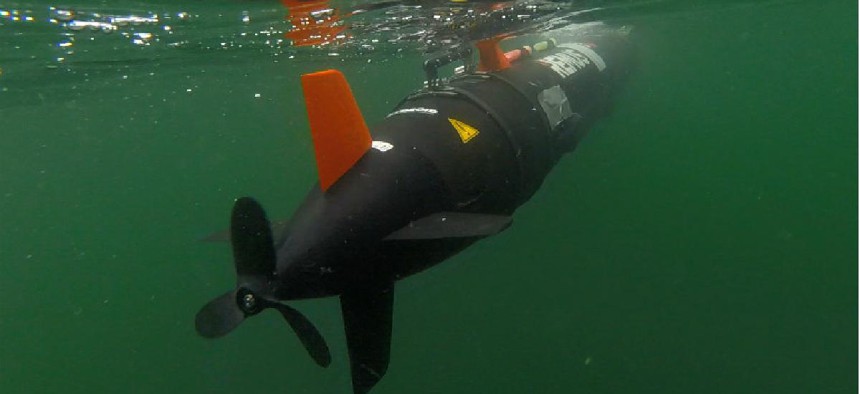Navy seeks unmanned fleet, but Congress needs convincing

The Navy wants to add more unmanned surface and underwater vehicles to its future fleet, but faces skepticism on Capitol Hill.

A Remote Environmental Measuring Units (REMUS) 100 unmanned underwater vehicle. (Photo credit: Travis Simmons/U.S. Navy)
The Navy wants to add more unmanned surface and underwater vehicles to its future fleet, but congressional skepticism is making plans difficult.
Acting Navy Secretary Thomas Modly said the service's future fleet must incorporate more unmanned vehicles, but it has to convince Congress they're worth it.
"We're going as fast as we can in terms of the funding we're getting for [unmanned vehicles]," Modly said at a Center for Strategic and Budgetary Assessments (CSBA) event on Jan. 29. "We're trying to make the case for more of this, but I think Congress, at least members on the [Senate Armed Services Committee], have some reticence about us betting too much on this until it's more of a proven technology."
Modly said he understood concerns on Capitol Hill since unmanned vessels were still in the research and development stages. The Navy was also looking at alternatives, he said, such as "minimally manned or lightly manned" platforms that can support full autonomy in "a warfighting scenario or a high end fight."
A Jan. 24 Congressional Research Service report bolstered such concerns saying that "such a change in fleet architecture could alter, perhaps substantially, the mix of ships to be procured for the Navy and the distribution of Navy shipbuilding work among the nation's shipyards."
The CSBA supported the drive toward unmanned Navy vehicles in its latest report. Bryan Clark, senior fellow at CSBA, said during the report presentation Jan. 29 that part of that rationale is personnel cost savings because optionally unmanned vessels require smaller crews and can still be fully autonomous when needed. The report, however, did not quantify potential cost savings due to automation.
Nonetheless, Modly said the Navy will have to act quickly on "getting the trajectory" for integrating unmanned technologies, especially as the service works to build its fleet.
The Navy has been working on its Integrated Force Structure Assessment, expected to be released this spring and includes the Marines. As Modly indicated Jan. 29, the service wants to increase the number of unmanned surface and underwater vessels as it strives to grow its fleet to 355. The assessment is a follow on to one published in 2016.
"We need to at least present a plan that gets us there ... within the decade" the acting secretary said.
The assessment, he added, will help outline the plan to meet that 355 ship goal in getting as "close to that structure as possible and at the same time grow the fleet to the size the president would like."
Modly also said he would deliver those recommendations to the defense secretary "within a couple of days."
NEXT STORY: FCW Insider: Jan. 30






